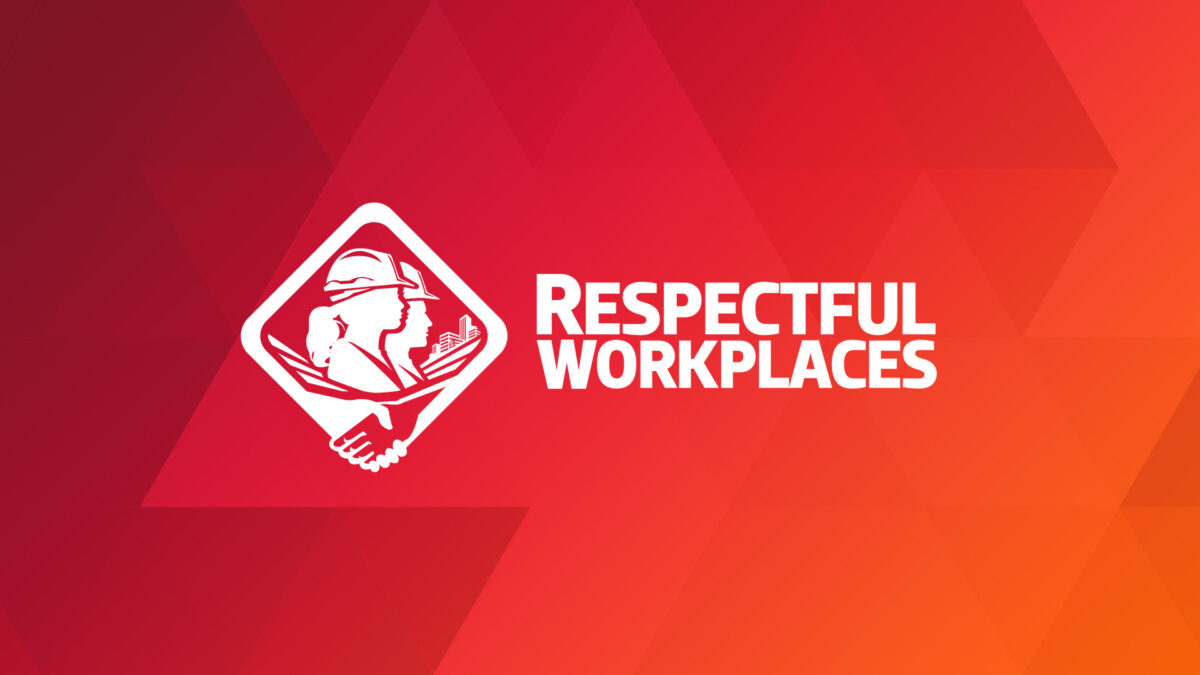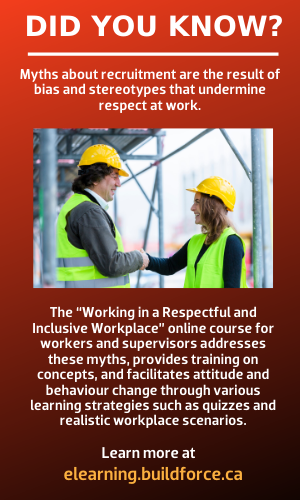Does your organization have strategies to raise awareness about inclusive recruitment?
We often think that meeting business goals is a hands-on, activity-driven process. But it takes more than developing new processes: those processes are often the result of changed beliefs, and this requires awareness and knowledge.
Creating and supporting a respectful and inclusive workplace requires some level of workplace culture change, and this is an ongoing process. Changing beliefs about people with different genders, backgrounds, and circumstances is an important step in the process. Our readers may remember from Blog #34 that our beliefs can be based on bias.
Research has shown that we all have bias and that we acquire it very easily. Babies have been shown to develop categories of “in-groups,” those people that are familiar; and “out-groups,” those people that are not familiar. We then develop shortcuts called stereotypes to describe everyone in those groups based on certain characteristics. Stereotypes then lead to myths or beliefs that rationalize the stereotype.
The employment patterns in the construction industry reflect historical societal values and demographics. At the turn of the 19th century when the processes of the industrial revolution were developed, only men were hired for field operations in construction. In addition, the racial demographics in construction reflected immigration patterns when most workers came from Europe. This has led to bias and stereotypes about who is suitable for construction work.
Research has shown, however, that the resulting myths or beliefs are not true. In the case of recruitment, diversity across many factors such as gender, background, and circumstances results in better financial performance, innovation, and can create a competitive advantage.
Here are three myths and the facts about hiring people with different genders, backgrounds, and circumstances:
Myth #1
We can continue to use the same recruitment, retention, and promotion systems that we’ve always used because they’ve been successful in the past.
Fact: The truth is that the world is changing. A quarter of a million skilled tradespeople have begun to retire. In order to meet its skilled-trades requirements, the industry must be able to recruit and retain the best and the brightest from all sources of labour.
Myth #2
Efforts to include people of different genders, backgrounds, and circumstances lower workplace standards.
Fact: This myth assumes that employers will hire people who are not qualified. Construction has not been a traditional occupation for some people due to various barriers, not due to job inability. Including people with different genders, backgrounds and circumstances means eliminating barriers, widening the hiring options and ensuring that workplace practices are based on a wide range of skills and personal qualities.
Myth #3
If we really want equality we should treat everyone the same, regardless of their gender, background, and circumstances.
Fact: Treating everyone the same is not always respectful of the differences of individuals. When workers have the required job skills, other factors such as their gender, circumstance, and background should not be a limitation on their opportunity to contribute. The true meaning of equality is using the abilities of all workers and making fair accommodations as much as it is practical within the business environment.
Organizations must develop effective communication and training strategies to address these myths and help workers understand why inclusive recruitment is important in a respectful and inclusive workplace.
The “Working in a Respectful and Inclusive Workplace” online course for workers and supervisors can be an important part of an organization’s communication and training strategy. The course addresses these myths and communicates the importance of a respectful and inclusive workplace. It also provides training on concepts and facilitates attitude and behaviour change through various learning strategies such as quizzes and realistic workplace scenarios.
For more info:
- Banaji, Mazarin R., and Greenwald, Anthony G. “Blindspot: Hidden Biases of Good People.” Delacourt Press, New York, 2013.
What can an effective Respectful and Inclusive Workplace Program deliver?
- Become an employer of choice – attract, retain, and advance top talent from all sources of labour
- Unlock collaboration and innovation – create high-performing teams through diversity of thought and experience
- Build your brand – your organization will gain a competitive edge as a leader and innovator
Get started today!
The BuildForce Canada Online Respectful and Inclusive Workplace Toolkit includes:
- the Respectful Workplace Online Self-Assessment Tool to assist organization leadership in assessing their current situation and identifying where they may need to make changes
- the Respectful Workplace Policy Framework and Implementation Guide to assist organizations in creating and implementing a policy that supports a respectful and inclusive workplace
- the Respectful Workplace Online Training Course to train workers on how to create and support a respectful and inclusive workplace
All the resources you need to create and support a respectful and inclusive workplace!

This project has been funded by Status of Women Canada.

Respectful and Inclusive Workplaces

